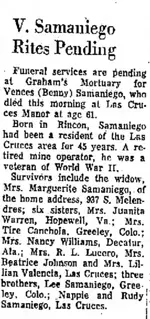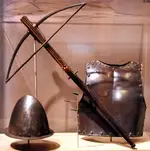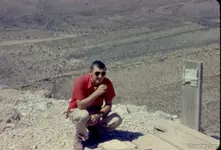vastterrain
Full Member
- Joined
- Sep 1, 2012
- Messages
- 109
- Reaction score
- 181
- Golden Thread
- 0
- Primary Interest:
- All Treasure Hunting
That's the problem with everyone being dead - we can't probe those stories for clarification. When Ova suggested retrieving the "pig iron" bar to Doc, was she there at the top of the peak and see him go down the hole and come up with a bar? Or did Doc bring her one to show her later? Lots of nuances and possibilities behind Ova's pig iron bar tale.
Ordinarily, a fair-minded person would take Ova's story to the bank as the unquestioned truth, as you do. However, Noss was a grifter, and these types know what it takes to convince people who have big expectations. Would Noss be deceptive with Ova? Why not? His regard for her apparently didn't prevent him from dumping her in favor of some new babe in Arkansas.
No, I don't think Noss lugged a couple hundred bars up to the top of the peak, but I do wonder if maybe he didn't take a few up there, or a dozen for a "show", prior to the "accidental" closing off of the peak's top end. We've heard testimony about a hundred or so bars that Noss's helpers saw at various places near VP. Dr. Swearigen also thought that the Fiege discovery was another hundred bars that Noss himself put in the cave at the base of the peak. If Noss was paranoid about the gold, it makes more sense to me that he would move gold to VP as a diversion away from, say, the Caballos. This would protect the Caballo location. If the gold came from VP, it seems like he'd hide those recovered bars far away from the peak, not at its base.

It must have been in the Spring of '39, I asked him to bring out a bar of that "Pig Iron" that he was telling me about ...................................... but he found a smaller one and he brought it out, and he said "That's the last one of these babies I'm gonna bring out!" and he throwed it on the ground, and there was gravel, and it kind of scooted a little ...............

SDCFIA,
You are going gangbusters with your theory without listening or reading for content. Both Benny and Jose Serafin saw the bars AND treasure in VP. Benny went all the way inside and saw everything including the skeletons staked to the cave floor. With the bar of gold that Doc gave Benny, he paid cash for his house. When he died on 03 Feb 1970 (61 years old), he left about $73,000 to his widow.
<cut>
Now, does that not sound like they were at the peak when Doc brought out the bar? I don't take ANYTHING to the bank (unless I personally know the person), but unless someone can show me hard evidence (or damn good circumstantial evidence), that what the person that was there and witnessed everything said is not true, then I tend to give the benefit of the doubt to the EYE WITNESS.
Mike

My goal in trying to date artifacts that Noss claimed were from VP is simply to determine a likely range of time within which articles were being placed and stored there. I am also curious how available old Spanish armor was back in the 1930's. Was it common enough that you could buy something like that and then claim you had removed it from VP?
I will be buying the Gold House books in the near future for my library, and look forward to seeing more artifacts that may be suitable for dating purposes.
 There is a timeline on things supposedly being in VP. stop and think about it,study, what I am saying and it will come to you in a clear light also.its one of the first things bought out in this story
There is a timeline on things supposedly being in VP. stop and think about it,study, what I am saying and it will come to you in a clear light also.its one of the first things bought out in this story  np
np
